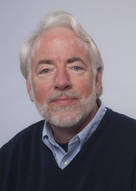Greenhouse Gases and Co-Pollutants: A Juggling Act
By: Jada Garofalo, Ceyda Durmaz, and Alan Kroeger
Monitoring more pollutants than merely carbon? This sounds like more work, right?

Not according to James Boyce and Manuel Pastor. James Boyce, featured this past Wednesday in the last National Climate Seminar of the academic year, discussed his and Pastor’s work with E3, Economics for Equity and Environment. Their most recent work, Cooling the Planet Clearing the Air: Climate Policy, Carbon Pricing, and Co-benefits, advocates for policy measures to mitigate high co-pollutant levels, especially co-pollutants where, geographically speaking, a disproportionately high volume of low income persons are affected by the damaging effects of poor air quality. The idea: mitigate co-pollutants to create co-benefits. As Boyce notes, marginalized populations are often located near areas of heavy industry and thus face more health complications due to localized pollution levels. He advocates for “target[ing] emissions reductions to places where we can have the biggest bang for the buck” and to do this, he says, we must take both co-pollutant levels and population variation into account when creating mitigation policies.
While many agree that public health inequities are important, it seems complicated to try and combine co-pollutant mitigation in poor communities with policies that seek to decrease global GHG emissions. Before any omnibus bill is passed to deal with mechanisms for mitigating climate change, it would have to get past the U.S. Congress, a congress that is currently in one of its most polarized moments in history. A climate change bill will already be contentious and even a “clean bill” will be met by strong opposition.
Boyce recommends any climate change bill should be attached to an environmental justice component that directs the EPA to create high priority zones around the U.S. where there are high co-pollutants, high GHG emissions, and a high density of poor communities living in close proximity to the pollution. The high priority zones would receive special attention for mitigating GHGs and co-pollutants before other areas of the U.S. because those with poor communities and high co-pollutants would receive greater societal benefit from improvements to public health while also mitigating GHGs.
This idea could create an inefficient outcome for immediate climate change mitigation. GHG emitting plants located outside of high priority zones and with lower GHG mitigation costs should also receive special legislative attention to bring about the most expedient and cost effective mitigation for climate change around the globe. An attempt to single out facilities that happen to be located in poor communities with more stringent GHG emission reduction policies with the assumption less co-pollutants will occur seems sure to enrage Congressmen with these facilities in their districts. In addition, the industry sector will likely feel if GHG emission reductions are necessary, then a free-market mechanism should be established and not a bureaucratically designated hotspot for co-pollutants.
The variation in industry compliance costs across facilities should be the primary factor for creating climate policy if there is a chance of reducing atmospheric CO2 levels. If the EPA is to regulate co-pollutants as Boyce suggests, then how would they go about it and still arrive at the most efficient outcome? Hopefully this can be a subject for a future NCS.
The environmental inequality surrounding co-pollutants is not just a problem in the U.S. What about the global dimension of environmental equity? Boyce says that the Environmental Kuznets Curve, which shows that environmental pollution starts decreasing after income per capita reaches a certain level, is misleading.
- It is not applicable to all kinds of environmental damage.
- There are cases where increasing environmental and political advocacy of low income communities against pollution result in a decrease in GHG emissions.
What is the role of democracy in environmental equity? According to Boyce, if democracy is not limited to free elections, but gives people “political voice, share in power, and ability to control decisions affecting their lives”, then democracy will certainly help countries solve their environmental problems.
Boyce concluded his discussion about environmental equity by saying that co-pollutants have severe adverse impacts in low-middle income countries like China and India. He says, mitigating co-pollutants will both help reduce GHG emissions and improve health quality in these countries. Whether in the United States or abroad, Boyce suggests we “move on both fronts at once” by using policy measures to tackle inequality and pollution.
The National Climate Seminar takes place on the first and third Wednesday of every month. Connect with top scientists, analysts, and political leaders to talk about climate change. The National Climate Seminar will resume in September 2013. Stay tuned for next year’s lineup.

Ceyda Durmaz is a master’s student in Environmental Policy at Bard CEP. She studied industrial engineering at the Middle East Technical University in Turkey and spent one year at the European College of Liberal Arts in Berlin studying philosophy, literature, and arts.

Jada Garofalo previously attained a BS in Nutrition and Food Science, which motivated her passion for public health. She is currently pursuing an MS in Climate Science and Policy at Bard CEP. This summer she will intern at the Center for Disease Control .

Alan Kroeger holds a B.S. in Natural Resource Policy & Management from Cornell University, and is currently pursuing Bard’s dual master’s degree in environmental policy and sustainable business. Before starting the MBA in the fall, Alan will be interning with the Environmental Defense Fund in their International Climate Program.
